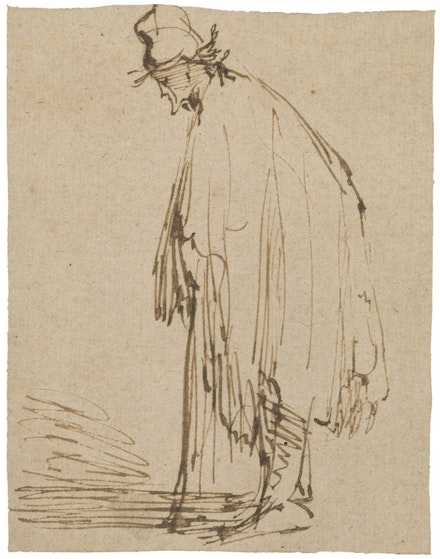ArtSeen
REMBRANDT’S WORLD: Dutch Drawings from the Clement C. Moore Collection
On View
Morgan Library & MuseumJanuary 20 – April 29, 2012
New York
The people of Rembrandt’s world do everything New Yorkers do—skate through the streets, smirk at foreign eyes, toast to their own survival—just set against bucolic Dutch scenery. Dwarfed by their landscapes, they quibble with the wind; but once indoors, the bacchanal nights begin. In Philips Koninck’s (1619 – 1688) “Seated Male,” a pub-goer is drawn with calligraphic control, lines either bulging or spindly in accordance with the limb they contain. This man sits with a wobble, grasps a jug, and revels in such vitality that he is forced to squint. Perhaps he shared a pint with the entourage next door, Cornelis Saftleven’s (ca. 1607 – 1681) “A Procession of Diabolical Creatures”: feline heads atop demon-like silhouettes with cloven hooves—imagine if sphinxes returned only to fall in with the wrong crowd. I say cheers, new friends, your zest is infectious. Yet away from this carnival, the most poignant image is from Rembrandt’s (1606 – 1669) own hand. In “A Beggar,” quick, vertical pen strokes belie a heaviness, both in the weight of ragged drapery and of the world. Hunched and indistinct, his glance trickles down a pointy chin. He is a beggar who asks for nothing, except, perhaps, that our stare not meet his own.


